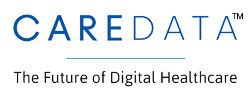Choosing the right laboratory management system is crucial for optimizing workflows, ensuring compliance, and improving overall efficiency. Two widely used systems in laboratory environments are LIMS (Laboratory Information Management System) and LIS (Laboratory Information System). While they may seem similar, they serve different purposes and cater to different types of laboratories. Let’s explore their differences and help you determine which one is right for your lab.
What is LIMS?
A Laboratory Information Management System (LIMS) is designed to handle sample tracking, data management, and workflow automation across research, clinical, and industrial laboratories. It is widely used in pharmaceutical, environmental, food testing, and biotechnology labs.
Key Features of LIMS:
- Sample & Inventory Management – Tracks samples from collection to disposal.
- Workflow Automation – Streamlines lab operations with automated processes.
- Regulatory Compliance – Helps meet industry standards (FDA, ISO, GLP, etc.).
- Data Integration – Connects with instruments and other software for seamless data management.
- Scalability – Ideal for large-scale and multi-location laboratories.
What is LIS?
A Laboratory Information System (LIS) is specifically designed for medical and clinical laboratories, focusing on patient-related data and diagnostic testing.
Key Features of LIS:
- Patient Data Management – Stores and manages patient records and test results.
- Test Ordering & Reporting – Automates diagnostic test requests and generates reports.
- Integration with Healthcare Systems – Connects with Electronic Health Records (EHR) and Hospital Information Systems (HIS).
- Regulatory Compliance – Ensures compliance with healthcare regulations (HIPAA, CLIA, CAP).
- Billing & Reimbursement – Includes financial management features for insurance claims and payments.
LIMS vs. LIS: Key Differences
| Feature | LIMS | LIS |
| Primary Focus | Sample and data management | Patient and test management |
| Industry Use | Research, pharma, food, biotech, and environmental labs | Clinical and diagnostic labs |
| Compliance | ISO, FDA, GLP, GMP | HIPAA, CLIA, CAP |
| Integration | Laboratory instruments, ERP, and workflow automation | EHR, HIS, and billing systems |
| Data Handling | Manages large datasets for research and quality control | Focuses on individual patient records |
Which System is Right for Your Lab?
- Choose LIMS if your lab handles high-volume sample processing, research, or industrial testing where efficiency, automation, and regulatory compliance are key.
- Choose LIS if your lab is patient-centric, requiring clinical test management, patient data tracking, and integration with hospital systems.
Final Thoughts
Both LIMS and LIS play crucial roles in laboratory operations, but selecting the right system depends on the specific needs of your lab. Understanding their differences and functionalities can help you make an informed decision that enhances productivity, compliance, and data accuracy.
Need help choosing the right system for your lab? Contact us for expert guidance!

